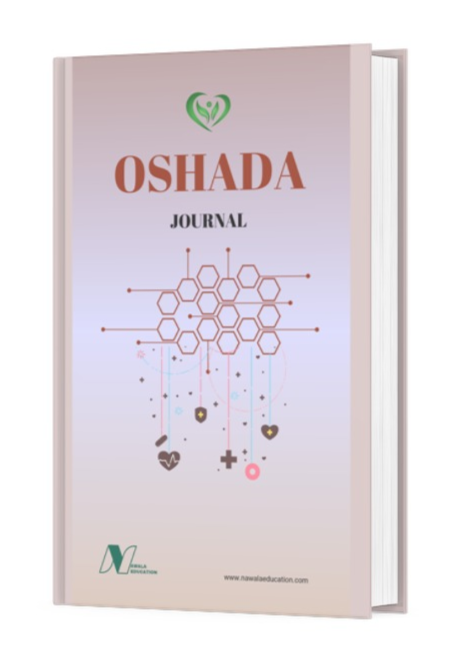Increase of Fibroblast Cells in Wound Healing of Diabetes Mellitus Male Rats (Rattus Norvegicus) Using Aloin
DOI:
https://doi.org/10.62872/3fvt9h57Keywords:
aloin, diabetes mellitus, Fibroblasts, wound healingAbstract
The healing process wound on the skin diabetic experience slowdown because dysfunction fibroblasts. Aloins boost expression fibroblasts that can accelerating the process of wound healing in patients with Diabetes Mellitus (DM). Objective study that is for now effect enhancement cell fibroblasts in wound healing wound I t mouse male DM with aloe giving. Method study use principle true experimental with approach post-test serial only control group design. Treatment form wound cut on mice. Group study using 4 groups with a negative control in the form mouse healthy, positive control form DM mouse. group action 1 in the form of DM rats were given 1.25 mg/ kg BW aloin and treatment 2 was in the form of DM rats given 2.5 mg/ kg BW aloin. Expression fibroblasts calculated on day 7 and day 14. Analysis bivariate using the Friedman test continued with the Wilcoxon Post- Hoc test. Research results that are there is enhancement fibroblasts significant in the group treatment given with aloein a dose of 1.25 mg/ kg and a dose of 2.5 mg/ kg. The conclusion is that Aloin accelerates wound healing wound incision in DM rats with mechanism enhancement expression fibroblasts with minimum dose of 1.25 mg/ KgBB. Research suggestions that is examination of re- epithelialization and density Dermal collagen in wound healing wound I t DM rats given aloein in the study next.
Downloads
References
A. Donkor, M. Ntiamoah, and N. Kuubabongnaa, “Open access Evaluation of the anti-infective potential of aloin A and aloin ointment formulated Isolated from Aloe barbadensis Miller,” pp. 1–8, 2020.
A. Ibuki et al. , “Aging-like physiological changes in the skin of Japanese obese diabetic patients,” SAGE Open Med. , vol. 6, p. 205031211875666, Jan. 2018, doi: 10.1177/2050312118756662.
A. Labib, J. Rosen, and G. Yosipovitch, “Skin Manifestations of Diabetes Mellitus,” Endotext , Apr. 2022, Accessed: Jan. 23, 2023. [Online]. Available: https://www.ncbi.nlm.nih.gov/books/NBK481900/.
ADD ANNISA, "EFFECT OF ALOE VERA (Aloe vera) Extract Gel On The Number Of Fibroblast Cells, Universitas Sumatra Utara," 2019.
Ade teti Vani, GEL ALOE VERA - Google Play Books , 1st ed. Indramayu: Adab, 2022.
FW Liu, FC Liu, YR Wang, HI Tsai, and HP Yu, “Aloin Protects Skin Fibroblasts from Heat Stress-Induced Oxidative Stress Damage by Regulating the Oxidative Defense System,” PLoS One , vol . 10, no. 12, p. e0143528, Dec. 2015, doi: 10.1371/JOURNAL.PONE.0143528.
G. Renuga, “Formulation of Moisturizer Aloin from Aloe Vera Plant as Cosmetic Skin Protective Medicine,” Int. J.Res. appl. sci. Eng. Technol. , vol. 7, no. 2, pp. 410–411, Feb. 2019, doi: 10.22214/IJRASET.2019.2053.
Hidayat et al., “Effect Of Topical Znso4 1 % On The Mmp-9 Expressions And The Number Of Fibroblast In Traumatic Ulcer Healing Of Diabetes Mellitus Wistar Rats Diabetes mellitus is the worldwide metabolic disease and leads to higher mortality in every year around the globe,” vol. 2, no. 2, pp. 163–171, 2018.
J. vera: AMPU in SWH Liang, L. Cui, J. Li, S. Guan, K. Zhang, and J. Li, “Aloe vera: A Medicinal Plant Used in Skin Wound Healing,” Tissue Eng . - Part B Rev. , vol. 27, no. 5, pp. 455–474, 2021, doi: 10.1089/ten.teb.2020.0236.
K. Vijayaraghavan, J. Rajkumar, and MA Seyed, “Efficacy of Chromolaena odorata leaf extracts for the healing of rat excision wounds,” Vet. med. (Prague). , vol. 62, no. 10, p. 565–578, 2017, doi: 10.17221/161/2016-VETMED.
LJ Li et al. , “Evaluation of efficacy of aloin in treating acute trauma in vitro and in vivo,” Biomed. Pharmacother. , vol. 88, pp. 1211–1219, Apr. 2017, doi: 10.1016/J.BIOPHA.2017.01.174.
LM Morton and TJ Phillips, “Wound healing and treating wounds: Differential diagnosis and evaluation of chronic wounds,” J. Am. Acad. Dermatol. , vol. 74, no. 4, pp. 589–605, Apr. 2016, doi: 10.1016/J.JAAD.2015.08.068.
M. Khamaisi et al. , “PKCδ inhibition normalizes the wound-healing capacity of diabetic human fibroblasts,” J. Clin. invest. , vol. 126, no. 3, pp. 837–853, Mar. 2016, doi: 10.1172/JCI82788.
MA HARAHAP, "Effect Of 5% And 7% Gel Extract Of Pirdot Leaf (Saurauia Vulcani, Korth) On Healing Of Socket Wounds Post Teeth Extraction Of Wistar Straining White Rats (Rattus novergicus). Faculty of Dentistry, University of North Sumatra, Medan 2020," 2020.
N. Primadina, A. Basori, and DS Perdanakusuma, "The Wound Healing Process in View from the Aspects of Cellular and Molecular Mechanisms," Qanun Med. - Med. J.Fac. med. Muhammadiyah Surabaya , vol. 3, no. 1, pp. 31–35, 2019, doi: 10.30651/jqm.v3i1.2198.
R. Bista, A. Ghimire, and S. Subedi, “Phytochemicals and Antioxidant Activities of Aloe Vera (Aloe Barbadensis),” J. Nutr. sci. Heal. Diets , vol. 1, no. 1, Jun. 2020, doi: 10.47890/JNSHD/2020/RBISTA/10243803.
R. Wan, JP Weissman, K. Grundman, L. Lang, DJ Grybowski, and RD Galiano, “Diabetic wound healing: The impact of diabetes on myofibroblast activity and its potential therapeutic treatments,” Wound Repair Regen . , vol. 29, no. 4, pp. 573–581, Jul. 2021, doi: 10.1111/WRR.12954
SA Gunawan, I. Berata, and I. Wirata, "Skin Histopathology in Incision Wound Healing in White Mice After Administration of Extracellular Matrix (ECM) Derived from Vesica Urinaria Pigs," Indones . med. Veterinus , vol. 8, no. 3, pp. 313–324, 2019, doi: 10.19087/imv.2019.8.3.313
W. Li et al. , “Sandwich structure Aloin-PVP/Aloin-PVP-PLA/PLA as a wound dressing to accelerate wound healing,” RSC Adv. , vol. 12, no. 42, p. 27300, Sept. 2022, doi: 10.1039/D2RA02320B.
XT Wang, CC McKeever, P. Vonu, C. Patterson, and PY Liu, “Dynamic Histological Events and Molecular Changes in Excisional Wound Healing of Diabetic DB/DB Mice,” J. Surg . Res. , vol. 238, pp. 186–197, Jun. 2019, doi: 10.1016/J.JSS.2019.01.048.
Y. Zheng, SH Ley, and FB Hu, “Global aetiology and epidemiology of type 2 diabetes mellitus and its complications,” Nat. Rev. Endocrinol. , vol. 14, no. 2, pp. 88–98, 2018, doi: 10.1038/nrendo.2017.151.
Downloads
Published
Issue
Section
License
Copyright (c) 2024 Ade Teti Vani, Cindy Arlita, Lismawati Lismawati, Nadia Purnama Dewi, Dessy Abdullah, Meta Zuliyanti Oktora (Author)

This work is licensed under a Creative Commons Attribution-ShareAlike 4.0 International License.

This work is licensed under a Creative Commons Attribution-ShareAlike 4.0 International License.











